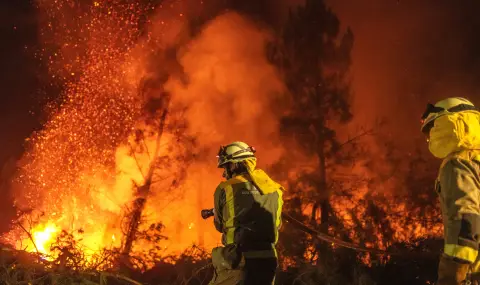Last year, Europe, the Middle East and Africa suffered some of the worst forest fires since 2000. According to the reporton forest fires in 2023, published by the Commission's Joint Research Centre, forest fires affected more than 500,000 hectares of land, the EC press service reported.
In recent years, catastrophic forest fires have been common in the European Union and neighboring countries, and 2023 was no exception. The large fires have put traditional firefighting tools to the test. The fire near the town of Alexandroupolis in Greece is the largest single forest fire recorded in the EU since the European Forest Fire Information System (EFFIS) began monitoring data in 2000.
Overall, 2024 can be considered a less severe forest fire season, as it marks a decline in damage after three consecutive years of devastating fires. The preliminary assessment for 2024 up to mid-September shows that the area burned by fires in the EU was below the average for the past two decades. This is mainly due to the erratic rainfall that affected much of the EU's territory in the spring and summer.
According to the report, approximately 96% of forest fires in the EU are caused by human activity, meaning that education and awareness-raising campaigns are an essential part of the solution.
Commissioner for Innovation, Research, Culture, Education and Youth, Iliana Ivanova, said: “The growing threat of forest fires, fuelled by climate change, requires a unified and evidence-based response. The Commission's Joint Research Centre plays a key role in this effort, improving early warning systems and providing critical data to inform policy and protect vulnerable regions. With almost all forest fires caused by human activity, prevention and education are key. By promoting closer cooperation across the EU and using scientific knowledge, we can better protect our forests, biodiversity and communities against the increasing risks of wildfires.“
Tackling wildfires in Europe and globally requires minimising the number of wildfires and managing the landscape in vulnerable regions, preventing the accumulation of high-risk fuel species and their spatial continuity. Nature-based prevention measures, such as promoting a tree species composition that is less susceptible to fire, allowing grazing by herbivores or prescribed burns, are effective in reducing the risk of wildfires, together with integrated landscape planning approaches. As the climate crisis worsens, it is crucial that Europe's population prepares for more frequent and intense wildfires. Preventive measures should include all population groups, including rural communities in direct contact with natural areas, as well as particularly vulnerable populations living at the “wild-urban interface“.
